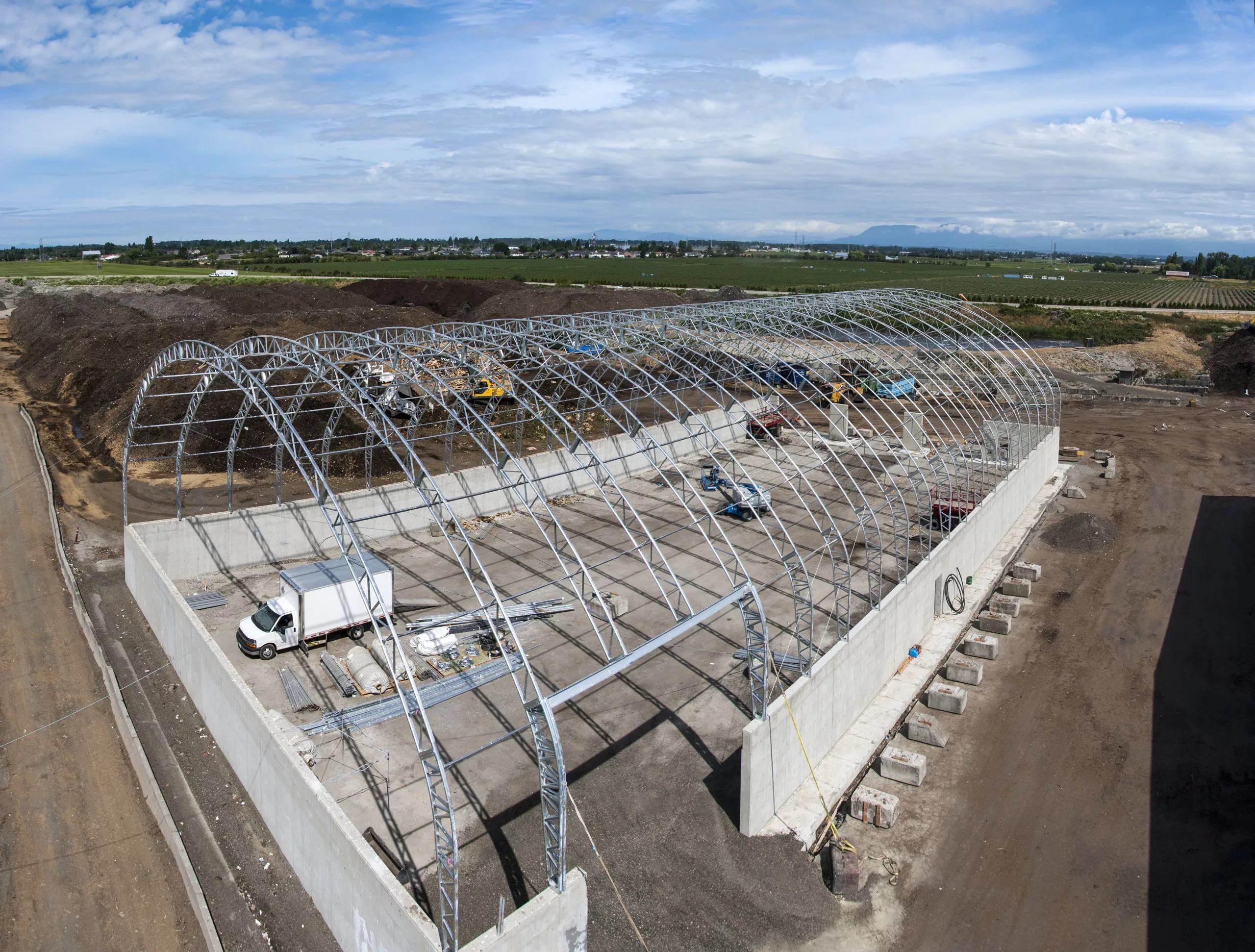Fabric buildings and greenhouses are essential to the agricultural sector. However, the Fabric Buildings Architects Act imposes strict rules for projects exceeding certain surface areas, although municipalities can choose whether or not to apply these requirements.
Fabric buildings and greenhouses: Architects’ Act requirements
- For a new agricultural dome, if the surface area exceeds 750 m² (8000 ft²), plans must be prepared by an architect.
- For an extension that brings the total surface area above 1,050 m² (11,300 ft²), the same requirement applies.
These thresholds also apply to agricultural greenhouses, which, although often considered lightweight structures, are subject to the same rules when they become larger.
As shown on our plans, this building is subject to Article 16 of the Architects Act, and will need to be returned by one of its members.

Flexibility of Fabric Buildings Architects Act
Fabric buildings, such as MegaDome, benefit from certain exemptions for small-scale operations or projects. These structures can be built without an architect if they do not exceed the surface area thresholds mentioned. For smaller or temporary greenhouses, farmers can therefore carry out projects more quickly and at lower cost.
Why is it important to comply with the law?
Although the law imposes certain constraints, it guarantees the safety of agricultural buildings, whether fabric buildings or greenhouses. Complying with the law helps avoid penalties and delays, while ensuring that construction meets safety and durability standards.
Whether you’re building a fabric building or a greenhouse, it’s crucial to take into account the legal requirements of the Fabric Buildings Architects Act to avoid complications in your construction or expansion projects. It’s also important to note that the services of an architect may be required by your municipality. In this case, it will be up to the customer to designate a professional, with whom our teams will be delighted to collaborate to bring your project to a successful conclusion.

